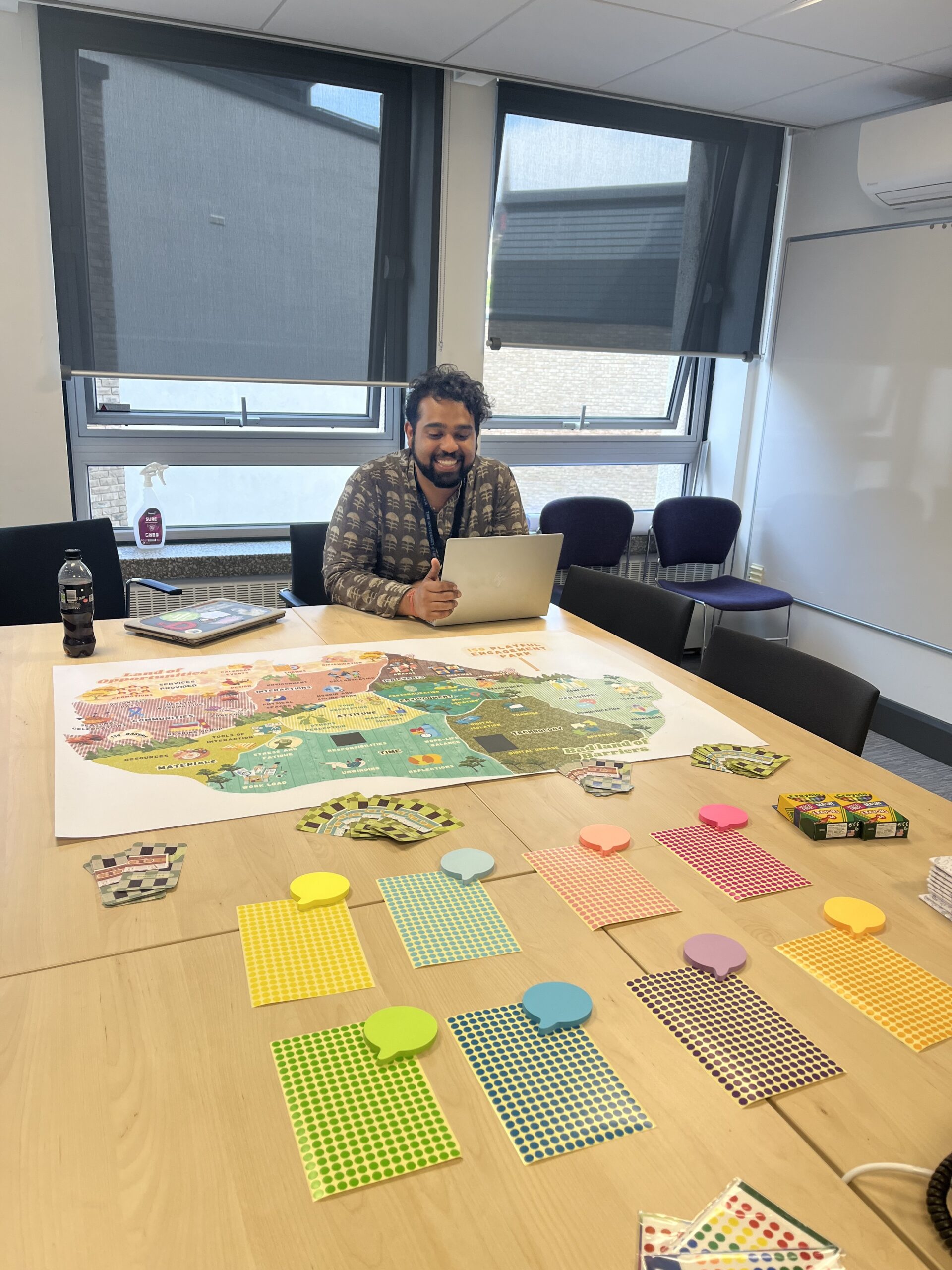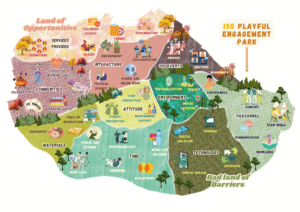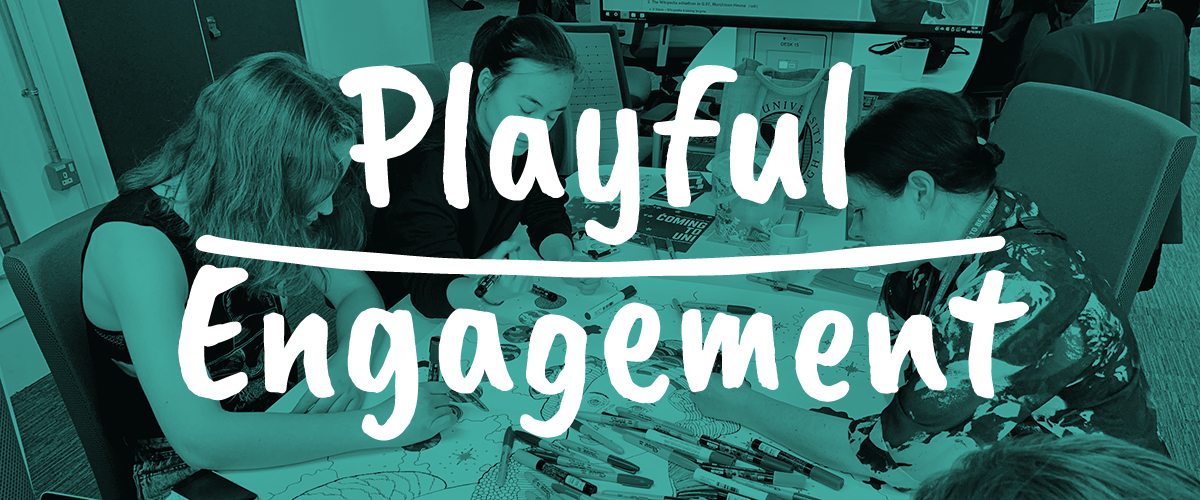Designing a Playful Engagement Strategy Focus Group

In late April and early May we ran two 1-hour focus groups designed by Ayaan. In alignment with ISG’s new ways of working with staff working a hybrid mix of days in office and remotely from home we decided to run one focus group in-person and the other remotely online. The entire workshop design therefore needed to to be adaptable for a physical version and a digital version. Our intention was to use the focus groups to deepen knowledge and understanding on the data collated from the survey. To achieve this, the focus group design uses playful Ketso, and cultural probing methods, built upon a previous workshop ran back in 2019 when creating the Playful Engagement Strategy.
Cultural probes are thought-provoking tools that participants are given to encourage new kinds of self-awareness and conversation about their lives, surroundings, ideas, and relationships (Martin and Hanington, 2012). They help in empathy mapping of problems which are complex, multi-layered and highly subjective. An important reason we chose this method was because cultural probes are a playful, informal and reflexive method by design. Each of these attributes aligned well with the ideology behind the Playful Engagement strategy and helped use the research process as an action.
In or to visualise the opportunities and barriers of playful engagement at the ISG, Ayaan illustrated a speculative map within a design fiction called the ‘ISG Playful Engagement Park’. The park had a ‘Land of Opportunities’ and a ‘Badland of Barriers’, with barriers and opportunities collated from the survey. This way the survey data became the foundational spectrum of barriers of opportunities with which the focus group could examine.
Each participant chose a colour coded sticker and set of post-it notes, to create a colour based identity to document their ideas and ‘locate/place’ themselves on the probe map. Crayons were provided instead of pens to the in-person group, to experientially engage playfulness into the activity.
Archetypal card is a method which had I’d used previously as a way for participants to form responses to textual questions internally and abstractly, and then build this out into verbal and textual responses. Ayaan designed two decks of cards using our Centre for Research Collections digitised images. The first deck to be used as visual metaphors, and the second deck with interrogational questions taken from survey highlighted barriers and opportunities. Each participant was asked to draw a question card from the deck, and then use the visual cards to help answer the question.

ISG Playful Engagement Park, by Ayaan Ahmed for The University of Edinburgh, CC BY-SA 4.0



